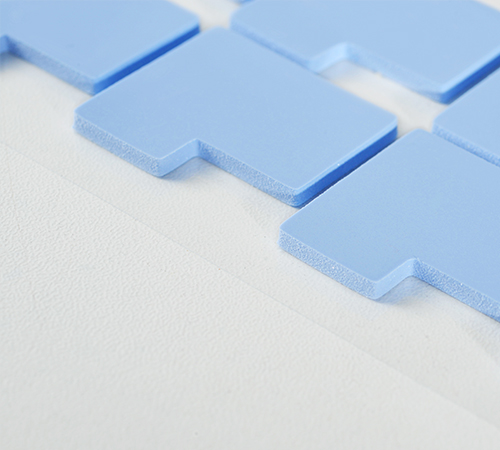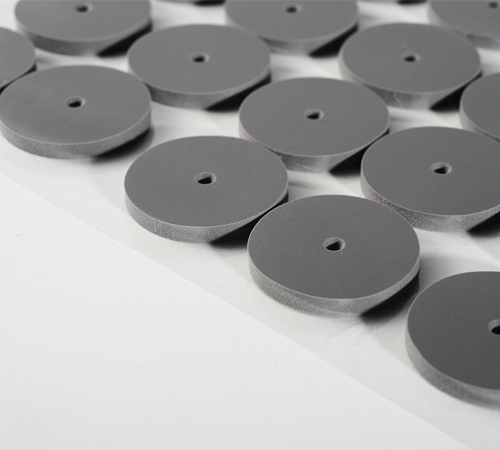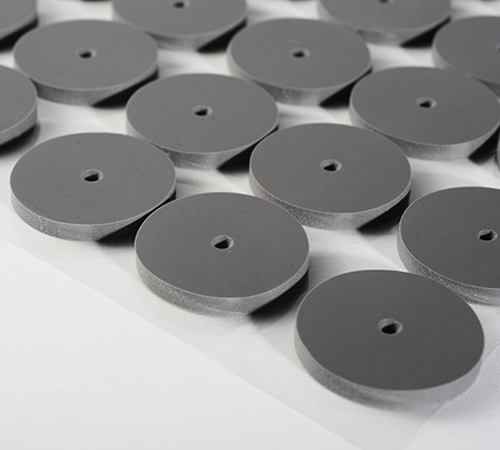
Introduction: How Does Thickness Affect the Performance of Thermal Pads?
In electronic device thermal management, thermal conductive pads play a crucial role in filling the uneven gaps between electronic components and heat sinks, optimizing heat transfer. However, many engineers and procurement professionals often struggle with one key question: Is a thicker thermal pad better, or is a thinner one the right choice?
In reality, there is no absolute answer—the optimal thickness depends on the specific application scenario and thermal requirements. This article will provide an in-depth analysis from multiple perspectives, including thermal resistance, gap-filling capability, compressibility, mechanical adaptability, and ease of installation, helping you make a scientifically informed choice.
1. The Core Function of Thermal Conductive Pads
The main functions of thermal conductive pads include:
✅ Filling air gaps: Air has a very low thermal conductivity (approximately 0.026 W/m·K). If gaps remain unfilled, heat transfer efficiency will be significantly reduced.
✅ Reducing contact thermal resistance: Optimizing the heat dissipation path and allowing heat to transfer more efficiently.
✅ Absorbing mechanical stress and enhancing reliability: Particularly useful in automotive electronics and industrial applications, where vibration resistance is essential to protect electronic components from damage.
However, thermal pads themselves also introduce thermal resistance, which is directly related to their thickness. Thus, selecting the right thickness is crucial.
2. The Relationship Between Thickness and Thermal Performance
The formula for calculating thermal resistance is:
Rθ= t/(K*A)
where:
● Rθ= Thermal resistance (K·cm²/W)
● t = Thickness of the thermal pad (cm)
● k = Thermal conductivity (W/m·K)
● A = Contact area (cm²)
✅ Conclusion:
Increasing thickness raises thermal resistance and reduces heat dissipation efficiency. Therefore, in high-heat applications, thinner and higher thermal conductivity pads are preferred to minimize the impact of thermal resistance.
However, if a pad is too thin, it might fail to properly fill the gap, resulting in air pockets that negatively impact heat dissipation. Thus, choosing the right thickness is a balance between thermal resistance and gap-filling capability.
3. Advantages and Applications of Thick Thermal Pads
✅ Advantages of Thick Thermal Pads (>1mm)
✔ Superior gap-filling capability: Suitable for larger gaps (e.g., over 0.5mm) and can compensate for surface irregularities.
✔ Mechanical cushioning: Thick thermal pads provide additional protection in applications with vibrations, such as automotive electronics and drones.
✔ Higher tolerance for installation errors: More suitable for large-scale production where assembly tolerances are higher.
�� Ideal Applications
● Large gap heat dissipation (e.g., IGBT modules, power modules, telecom base stations)
● High-vibration environments (e.g., automotive electronics, railway equipment, drones)
● Rough surface contacts (e.g., industrial heat sinks)
4. Advantages and Applications of Thin Thermal Pads
✅ Advantages of Thin Thermal Pads (<0.5mm)
✔ Lower thermal resistance and higher heat dissipation efficiency: Thin thermal pads shorten the heat transfer path, improving heat dissipation.
✔ Ideal for high-performance cooling solutions: Used in CPUs, GPUs, 5G base stations, and other heat-sensitive applications.
✔ Suitable for compact designs: Many precision electronic devices require thin thermal materials for a proper fit.
�� Ideal Applications
● High-power chip cooling (e.g., CPUs, GPUs, LED modules)
● Ultra-thin electronic devices (e.g., smartphones, laptops, VR devices)
● Precision assembly applications (e.g., servers, data storage equipment, optical instruments)
5. Key Factors in Choosing the Right Thickness
When selecting the thickness of a thermal pad, the following factors should be considered:
Factor
Thick Pads(>lmm)
Thin Pads(<0.5mm)
Thermal efficiency
Lower (higher thermal resistance)
Higher (lower thermal resistance)
Gap-filling capability
Strong (suitable for large gaps)
Weak (requires precision assembly)
Mechanical cushioning
Excellent
Moderate
Tolerance for installation errors
High (ideal for large-scale production)
Low (ideal for precision assembly)
Best applications
Industrial equipment, automotive electronics
Consumer electronics, high power chips
Recommended Selection Steps
1️⃣ Measure the gap: Use a thickness gauge to determine the actual gap in the device to avoid selecting a pad that is too thick or too thin.
2️⃣ Evaluate thermal needs: For high-power devices, prioritize thin pads to reduce thermal resistance. For larger gaps or vibration-prone environments, opt for thicker pads to ensure proper contact.
3️⃣ Conduct real-world testing: Different thicknesses may perform differently in specific devices, so thermal testing is essential to determine the best solution.
6. Common Misconceptions and Expert Advice
❌ Misconception 1: Thicker Pads Provide Better Heat Dissipation
● Why it’s wrong: Some believe that thicker pads improve thermal performance, but in reality, increased thickness leads to higher thermal resistance, reducing efficiency.
● Correct approach: Choose the thinnest possible pad that fully fills the gap to minimize thermal resistance.
❌ Misconception 2: Softer Pads Are Always Better
● Why it’s wrong: While soft pads conform better to surfaces, overly soft materials may compress excessively, leading to inadequate contact and poor heat dissipation.
● Correct approach: Select an appropriate hardness level (typically Shore 00 30-50) based on assembly pressure.
✅ Expert Advice
● Prioritize high thermal conductivity materials: If a thicker pad is necessary, choose one with at least 6W/m·K thermal conductivity to offset increased resistance.
● Layering approach: If a single-layer solution isn’t sufficient, consider stacking multiple thin thermal pads to improve adaptability and reduce overall resistance.
7. Conclusion: The Best Thickness Depends on Application Needs
When selecting a thermal pad thickness, consider device requirements, thermal efficiency, assembly conditions, and budget:
✔ Choose a thicker pad if dealing with large gaps, high vibration, or rough surfaces.
✔ Choose a thinner pad if you need high thermal efficiency, compact design, and precision cooling.
Ultimately, real-world testing is the key to optimizing thermal management solutions. We hope this guide helps you make a scientifically informed choice to enhance heat dissipation efficiency and device reliability!
 CN >
CN >



